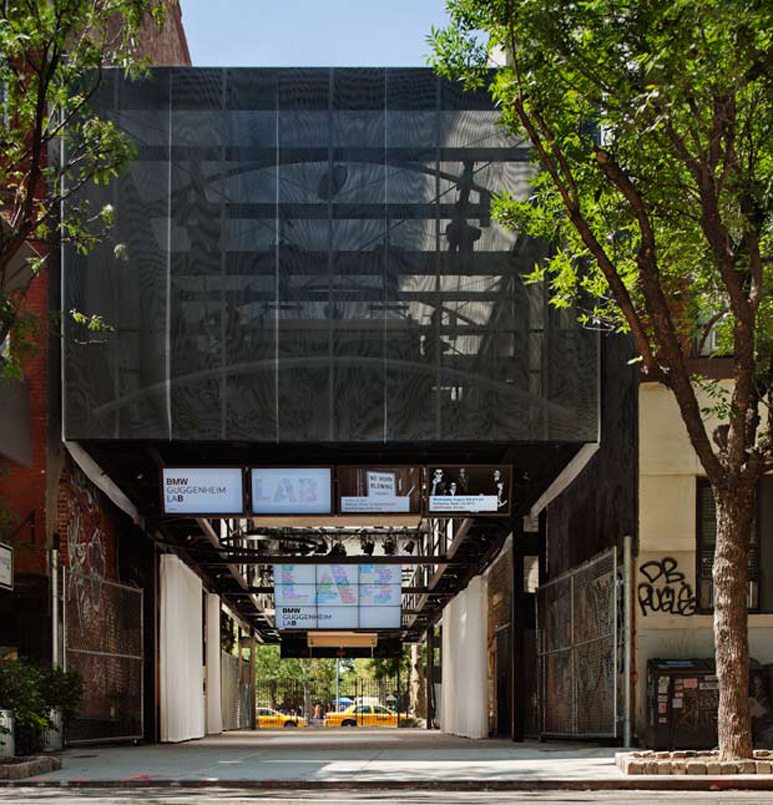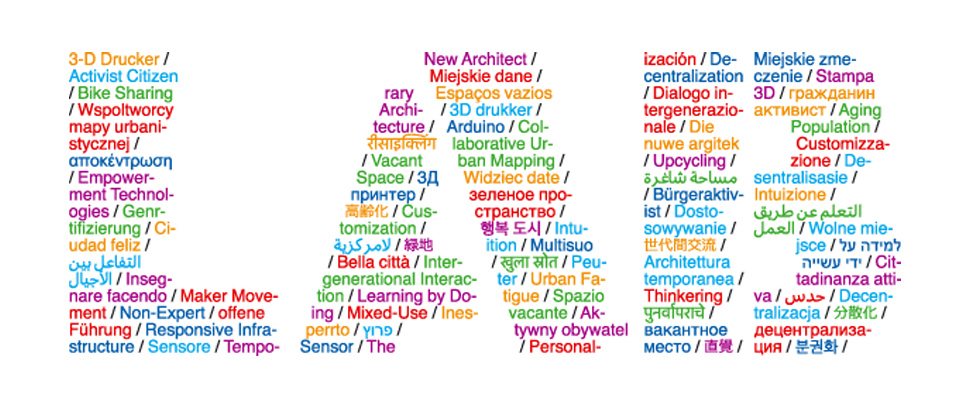From 2011-2013, the mobile BMW Guggenheim Lab studied life in modern cities, offered free programs and workshops, and implemented projects across New York City, Berlin, and Mumbai. 100 Urban Trends emerged from the Lab as a database for the most talked-about trends in city life. Participatory City, a recent exhibit at the Guggenheim, provided an overview for the major trends explored by the project.
The Lab teams were interdisciplinary, and included experts in the fields of urbanism, architecture, art, design, science, technology, education, and sustainability. What follows is a sample of standout trends from the Lab’s work in NYC.

Altruism may be a surprising trend for anyone who thinks of NYC as a hardened, “get yours” type of city. “Altruism” means showing concern for the wellbeing of others in a selfless way (even at cost to oneself). During Love Night, psychologists and neuroeconomics experts attempted to design environments that could inspire even the most wolfish of Wall Street to act decently. The idea is that design combined with citizen action can encourage friendly behavior in daily life.
Bike politics takes a critical look at the debate on bike infrastructure in cities—covering topics such as traffic laws, cyclist fatalities, and the need for more bike lanes. During the Mobility in Cities event, Benoit Jacob, head of BMW’s division on sustainable transportation, met with New York City Department of Transportation chief of staff Margarat Newman. The two brainstormed on the future of urban mobility, exploring new possibilities for public transportation, cars, and bikes.
Evolutionary infrastructure looks at modalities of architecture and city planning that allow for natural and artificial systems to work effectively together. Engineered and natural processes are viewed as reciprocal evolutionary forces. Michael Manfredi and Marion Weiss from Harvard’s Graduate School of Design led a workshop on evolutionary infrastructure, with the aim of discovering renewed potential for mega-utopias.
Hacking the city refers to the capacity of urban inhabitants to transform city systems through informal actions. Sociologist Saskia Sassen came up with the idea, in order to show how open-source, grassroots participation can help make cities more habitable and humane. The idea is to subvert the meaning of hacking from technological to humanist. Perhaps dog-walkers, old ladies on stoops, and other vigilant community members are preferable to the most advanced surveillance technologies.
Resilience is a city’s ability to cope with and recover from hardship. While it can mean different things, often a resilient city is able to adapt to and mitigate the effects of climate change. It goes without saying that NYC’s response to Superstorm Sandy falls under this category. A panel discussion took place on different ways that New Yorkers can actively respond to environmental stress in the coming years.
Urban psychology studies the effects of city life on mental health and wellbeing, looking into areas such as stress, overstimulation, anxiety, relationship to space, and urban fatigue. Journalist and Lab member Charles Montgomery gave a talk (Comfort, Cities, and the Science of Happiness), arguing that similar components go into designing happy, sustainable, and resilient cities.
Some have criticized the BMW Guggenheim Lab for being overly conceptual and having little impact on actual urban existence. During its time in the East Village, some residents complained that the ideas being explored by the Lab where already in effect in the area (such as community gardens, locally owned art galleries, and small businesses). Critics said that the Lab might have done more good in a community lacking the resources of the LES.
While the BMW Guggenheim Lab’s work was highly academic, it’s relevancy can’t be blown off easily. During the Lab’s stint in NYC, it explored and engaged with critical issues for New Yorkers. However, the extent to which city-dwellers will be able to apply what was learned through the Lab in daily life remains to be seen.


